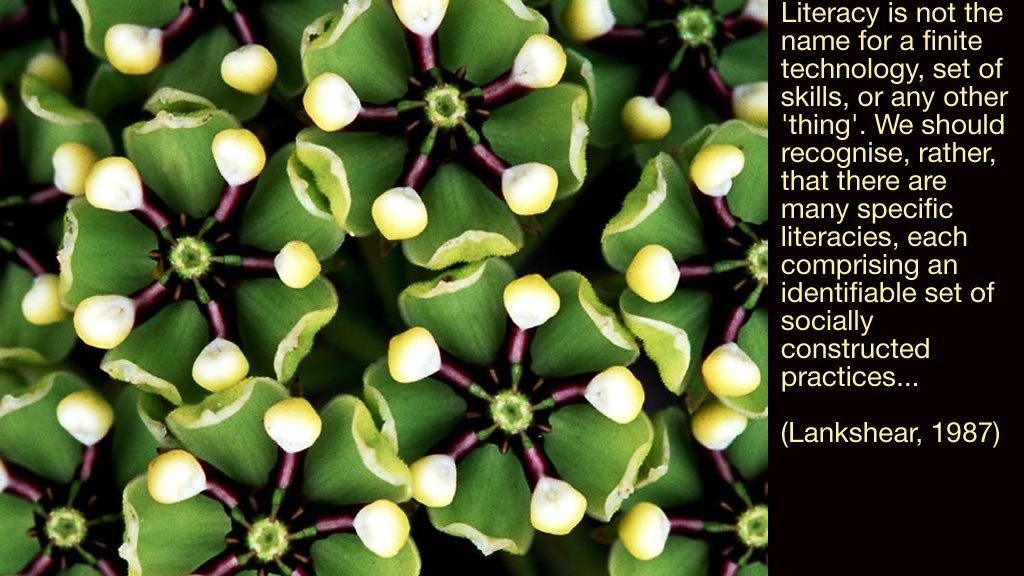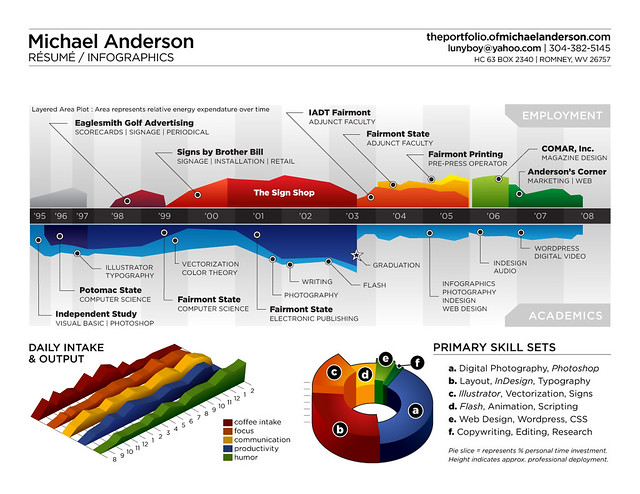This week, everyone will post in response to this prompt by midnight Sunday, September 13. Make sure to identify your post with the category “Beyond the Resume.”Do organizations still want a traditional resume? What about alternative resumes? What about social media profiles? Leslie Stevens-Huffman (2014) reports that a recent survey indicates “although a great majority of companies use platforms such as Twitter or LinkedIn to source candidates, 77 percent always ask for a resume before scheduling an interview and 19 percent request one most of the time.”Simply put, we’re in a transition period, so as a job applicant, you need to be prepared to provide prospective employers with a traditional resume and a presentation of your qualifications in several other formats.
These alternative formats include:
- an alternative resume (some creative version of your professional presence, which might be as slight a change as a use of job annotations or as dramatic as a video resume)
- a social media presence (some combination of a website, LinkedIn, Twitter, FaceBook)
- two versions of a prose biography, one a max of 50 words and a second one 100 words (“Prose versions” of your resume are narrative descriptions of your qualifications and experience, the sort of thing you would include in a cover letter, or an “About Me” page on a social media profile or website. So you should have a longer prose narrative of 100 words, and a shorter version of 50 words.)
For Project 2, you will create a professional website, using a public hosting solution, so that it can become part of your professional presence outside of the university.
This blog post is an opportunity to begin creating or updating alternative presentations of your qualifications, so that you have them available when opportunity presents itself and so that you can integrate them with your online professional profile.
What constitutes an alternative resume? Changing the design or medium. Changing the selection or emphasis of content. Changing the examples. These are some possible alternative formats (and you can find more by goggling images of alternative resumes):
In your blog post, discuss your choices about your professional presence—and your thoughtful decisions about how to depict yourself. For example, what image do you want to create? What about your experience and strategic knowledge do you want to emphasize? How do you want to distinguish yourself from others with a similar background? How can you use the basic principles of information design to help create strong, effective resumes.
In your post, provide or link to examples of two alternative resume formats (from the bulleted list of alternative/creative resume formats above) for presenting your experience and qualifications that you would like to use when creating your own online professional profile. You don’t actually have to create an alternative resume presentation of your skills, experience, and qualifications, just provide examples of two formats you would like to use when you do create the revised version of your professional profile for submission. In your discussion, provide your rationale for why you think these alternative formats would be appropriate and effective in helping you stand out from the crowd.
Posting: Groups 1 & 2 (by Sunday at midnight)
Commenting: No comments unless you’re doing so for extra credit
Category: Beyond the Resume
References (Use these to generate ideas and learn strategies for alternatives to supplement your traditional resume)
Diaz, Charlsye Smith. (2013). Updating best practices: applying on-screen reading strategies to résumé writing. Business Communication Quarterly, 76(4), 427–445.
Dockweiler Scott. (2014, January 22). The key to answering “Where do you see yourself in 5 years?” The Daily Muse. Retrieved from http://www.thedailymuse.com/job-search/the-key-to-answering-where-do-you-see-yourself-in-5-years/
Lauby, Sharlyn. (2010, Oct 05). 4 digital alternatives to the traditional resume. Retrieved from http://mashable.com/2010/10/05/digital-resumes/
Laya, Patricia. (2011, June 11). 13 insanely cool resumes that landed interviews at Google and other top jobs. Retrieved from http://www.businessinsider.com/insanely-creative-resumes-2011-6 [NB: And links to more. A good idea? It depends.]
Lipman, Victor. (2013, June 6). Is the traditional resume dying? Forbes. Retrieved fromhttp://www.forbes.com/sites/victorlipman/2013/06/06/is-the-traditional-resume-dying/
Manovich, Lev. (2012, February 26). 5 minute guide: Graphic design principles for information visualization. Retrieved from https://docs.google.com/document/d/1CVbRgxAby5AdS6ERCmAde69v7_gXSWoK-YcJZzs-KKY/edit
NHS Designs. (n.d.). Graphic designs: Principles of layout. Retrieved from http://www.nhsdesigns.com/graphic/layout/principles.php (NB: The four graphic design principles are important for you to know and use regularly, including in this assignment; the examples, however, are amateurish.)
Nixon, Barbara B. (2009). Principles of effective design: Joshua tree epiphany and CRAP. Retrieved from http://www.slideshare.net/bnixon/principles-of-effective-design (NB: These 10 PPT slides offer a useful, illustrated review of Robin Williams’ graphic design principles. Borrow the Williams’ book from the WCP intern office for a more in-depth review.)
Stevens-Huffman, Leslie. (2014, January 22). Are traditional resumes passé? Dice. Retrieved from http://news.dice.com/2014/01/22/traditional-resumes-passe/
Weber, Lauren. (2014, January 23). In a tough job market applicants try résumé gimmicks. Wall Street Journal. Retrieved from http://on.wsj.com/KRvJQR







